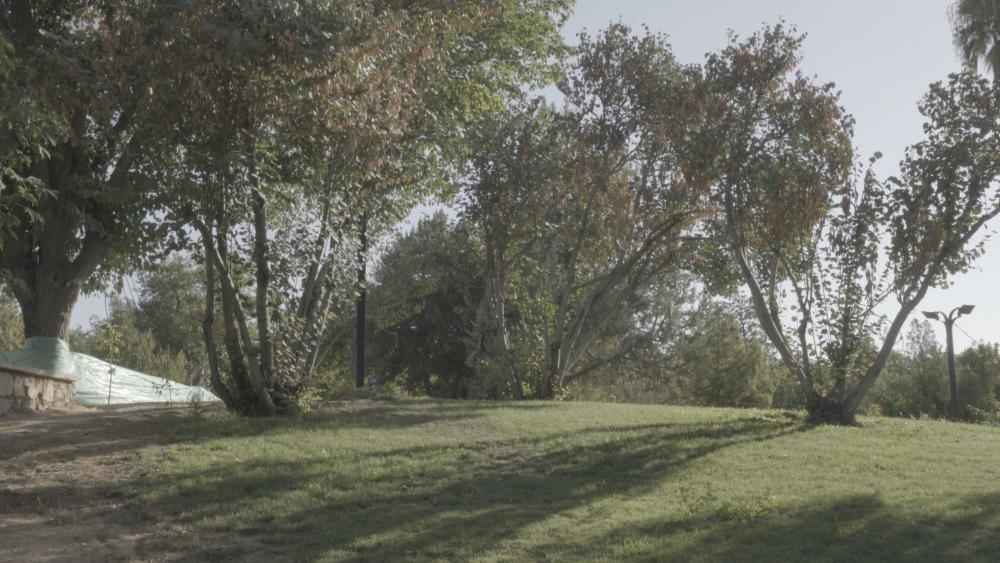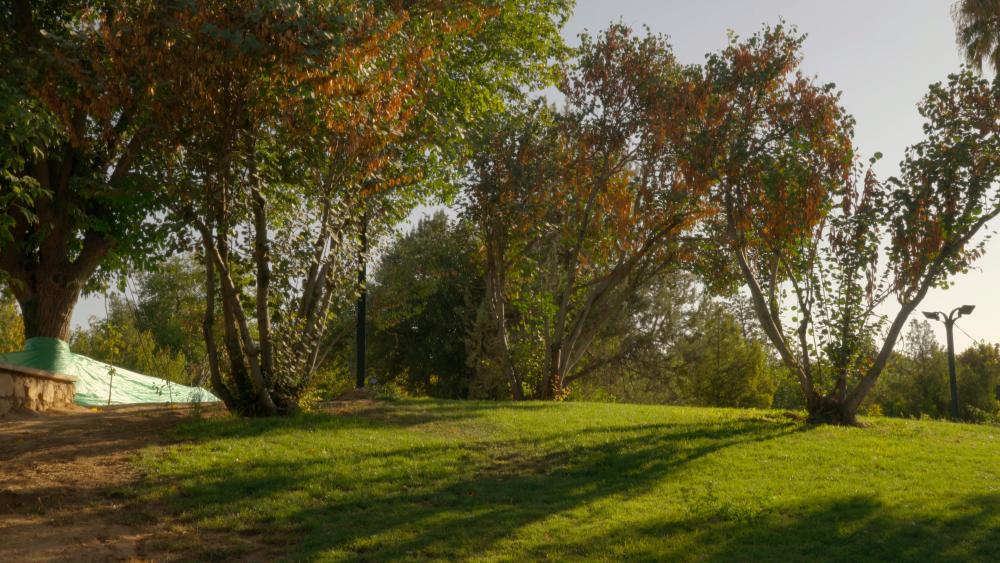
sina_html
Members-
Posts
24 -
Joined
-
Last visited
Content Type
Profiles
Forums
Articles
Everything posted by sina_html
-
Why YouTuber Logan Paul can't put his camera down
sina_html replied to Andrew - EOSHD's topic in Cameras
https://www.youtube.com/watch?v=39RS3XbT2pU -
I think all of us are looking for such a dream camera
-
I usually deal with this situation, a lot of clients want a version for social networks. I've made 5 minute videos under 20 MB a lot. I use Handbrake to re-encode a high quality master from Premiere, my check list goes like this: 1. lowering the resolution of the image to 720p or even 480p 2. making the sound mono and lowering the bit-rate as much as possible depending on the content. 3. In Handbrake, there are two encoding modes, constant quality and specified bit-rate, with constant bit-rate, you can specify the size of the output file quite accurately but constant quality mode is more efficient so I use it and experiment with different setting until I get the required file size. 4. there is constant and variable frame rate options but I haven't experimented with them and don't know how much do they affect the file size or how reliable a variable frame rate file can be. 5. encoder levels and standards may need to meet a certain requirement depending on the platform that you are going to use the video on. Another way that comes to my mind is to upload your video to Vimeo and then download one of the lower quality re-encoder version that meets your file size requirements.
-
It's a great question, I personally use Adobe Encore, the tool set is enough for what ever I imagine I would need to do but I'm not happy with the quality of mpeg2 encodes from Adobe line of products (Premiere, Media Encoder, Encore) so I would be happy to try something new. my Ideal solution would be a good mpeg encoder in combination with Encore.
-
Can anyone else tell their experience with UHS II (not V rated) cards?
-
Just tested a short clip last night with resolve studio and it worked fine exporting a 1080p. didn't tried exporting anything else. My premiere doesn't even import the footage, it just hangs at import dialogue box.
-
B
-
I own a GH5 and work alongside friends who use A7S and if a6300 image and dynamic range is anywhere near the original A7s then I think going from a6300 to GH5 you will feel a little disappointed in amount of noise and DR. I dont feel comfortable going above iso 800 and 1600, specially when my footage is compared to A7S, in iso 1600 and 1300 you really dont want to under expose and then you may need to pull down shadows in post to hide some noise. low contrast looks really dont work for me in those high iso settings. It is always nice to have a million stops of DR but it has never been a deal breaker for me, 10, 11, 12 stops are a lot and u can always work around limited DR. In any other aspect, gh5 is a great professional tool. you get great IBIS, good and bright rotating display, great battery life, very nice slow motion and minimal rolling shutter, and 1080p image is much better than a6300. If 1 or 2 stops of higher iso performance and an stop of DR is more important to you than rolling shutter, reliability (battery, heat, dual memory, etc..) and ergonomic aspects of the camera, then why not stay with Sony?
-
For me, magic bullet looks is a good way to quickly try different looks and find some inspiration, and it has a lot of tools and it can be used subtly and professionally. Film convert has fewer looks, it has special profiles for major cameras so you get more predictable and constant results, but for me the best part of it is the film grain feature which is among the best ways to add grain that I've seen.
-
In Premiere, select your clip in the timeline (or an adjustment layer above it if you work that way) and then go to the "Lumetri color" panel and in "basic correction" category, there is a "input LUT" dropdown, open it and select brows, find your cube file and select it. you are done. Also I recommend trying FilmConvert, with proper profiles of course. In my very limited experience with log footage, if you want to have accurate colors, you need to "transform" colors from whatever color space the log footage is using to your viewing or output format and it is properly done by the use of a manufacture provided formula (color transform matrix, LUT, IDT, ...) and eyeballing it is not really accurate. I'll be glad to hear more experienced members opinion on this matter.
-
Hi everyone, I have searched around for high end architecture/real state showcase videos and so far, I haven't found anything interesting. So please point me in the right direction if you know of any interesting sources. Thanks.
-
Please keep us posted if you find anything about a firmware update or fix for the adapter. Tnx
-
I also experience this problem from time to time, I try to save my project before opening file browser from premiere. There are unresolved discussions about this on adobe forums as well: https://forums.adobe.com/thread/2134255
-
I would also like to know the answer, and also your feedback on this adapter, any other issues?
-
Did anyone tried the crane with a GH5?
-
Actually with the help of Photoshop, you can really cover all the basic stuff in premiere. you can animate position, scale, rotation, opacity etc... and can even add motion blur with the help of transform effect.
-
It just occurred to me, with the ability to shoot 60 fps in 4K, would be too crazy to think about HDR video in 4k 30p? something like RED's HDRx.
-
-
In my eye, what separates a proper cinema camera and cinema look from my own work (with an eos M) are these: resolution: not to be confused with sharpness, looking at images from a black magic camera, even at 1080p, I can clearly see how much detail they resolve, were my camera needs to do sharpening instead, to give the illusion of detail. and that "sharpening" is something that I think gives away the video look. Of course sharpening is used often in cinema, take a look at tomorrow land for example, but I'm sure those effect are done in more advanced and complex manners that what my camera does. A few month back, I downloaded some sample file from RED and was actually surprised how soft the 5k and 6k footage looked at 100 percent, but it looked more "filmic" and "cinematic" anyway... and no aliasing and moire of course. having a lot of dynamic range doesn't hurt but I think one can work around a limited dynamic range... The other thing is color and tonality, this is again were cinema cameras can manage to store as much information as possible so the end product is richer in terms of color. and all the other thing that you yourself mentioned.... lighting, set designing, camera movement, lenses... and a good story. as for transforming a video look into a more filmic look... I think the basic rules are use as less in camera sharpness as possible, expose properly and try to manage the dynamic range and avoid shooting with a high contrast picture profile to get a flatter look which some argue that itself looks more cinematic, and plugins like film convert can actually give you a more filmic, I personally like the grain they produce and use it whenever i denoise my footage. but please be subtle when using any kind of effect or lut. think about composition and move your camera properly... for practice, study your favorite movie or music video or... and pay attention to every aspect of the image that you see and like, from color and contrast to camera angel and movement and framing and etc. sorry for the long post...
-
Thanks guys, so if it's the same as GH4, I'll get 25p option no matter where I buy the camera from... great, thanks again.
-
Hi all, a quick question about region locking on Panasonic cameras... In B&H website, both NTSC and PAL framerates are listed for GH4 and GH5 but if I recall correctly, GH4 is region locked and is not switchable, right? for other newer models, the actual model numbers are different. So do you guys think that GH5 will be the same as GH4? and is there a code serial or model number that clearly distinguish the two regions? I mean the region is probably mentioned on the box, but is there a way to know which region a camera is from the name/code/serial that websites list?
-
I previously had the same feeling about Sony Slog 2. But recently I realized that the problem was my workflow not slog2. Here is my recent experience, testing A7R2 in slog-2 with Adobe premiere witch gave me good looking (not necessarily accurate) colors: - first I applied a color transform matrix to convert sgammut to rec 709. take a look at this post: - then I tried to add contrast and saturation with lumetri color. I was Kind of happy with the results but then I tried applying Adobe's Slog 2 SL LUT (in lumetri effect, basic corrections) and found out that it game me better results and I no longer needed to manualy add saturation, just contrast. So in a nutshell: Apply channel mixer effect > Apply S-log 2 SL lut > Add contrast. I also tried Resolve, first i applied Resolve's own Sony S-log 2 to Rec 709 1D LUT (from nodes panel) then found that I need to bring down the Gain quite significantly (I dont know why it happens) and then added a little bit of saturation and it gave me comparable result with premiere workflow. I was aslo recording both internally and externally to a shogun, I found that shogun files needed a data range adjustment before starting the above workflow. you can read about this adjustments in here: https://***URL not allowed***/fix-crushed-blacks-on-sony-a7s-and-a7s-ii-external-recordings/



